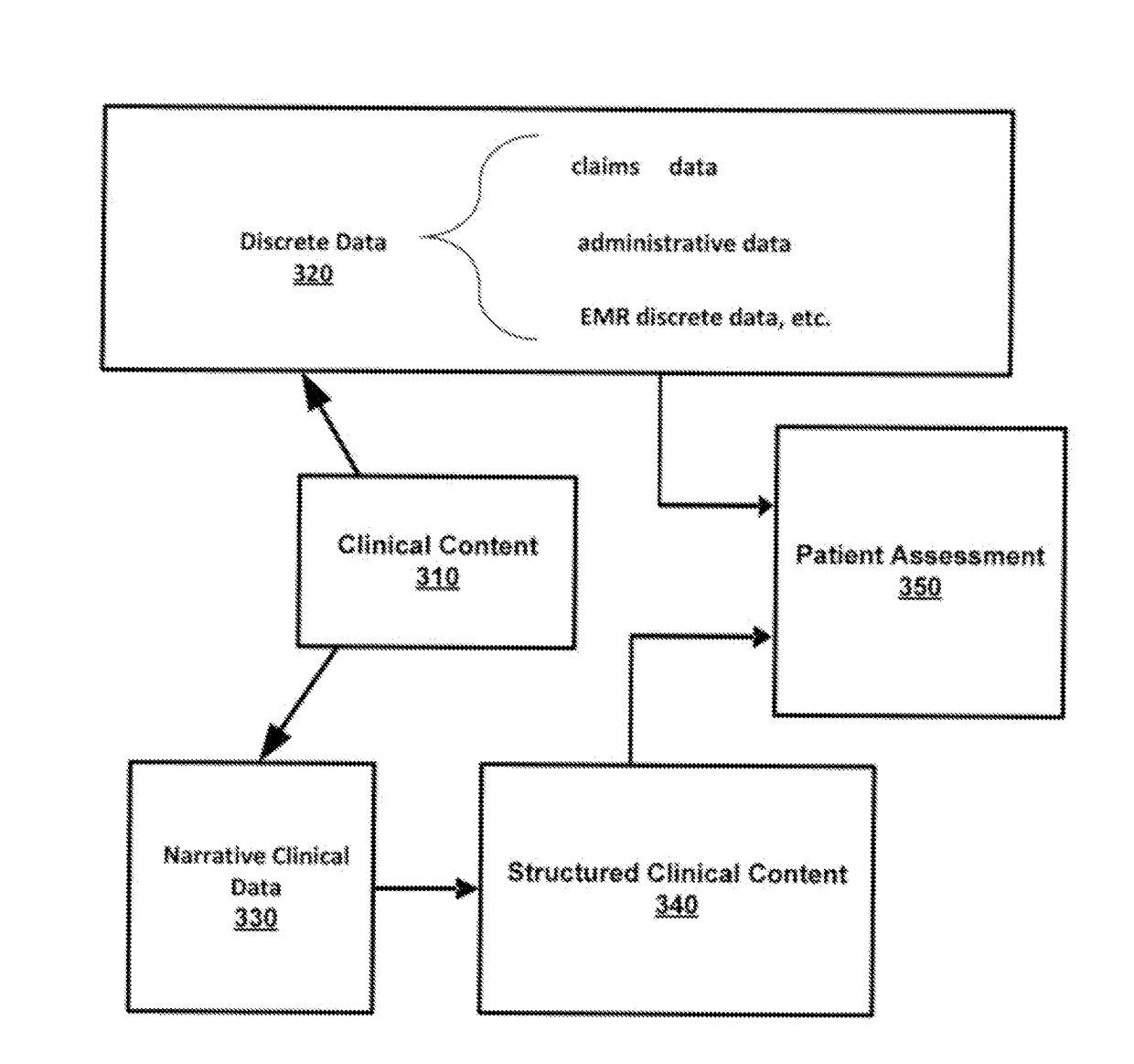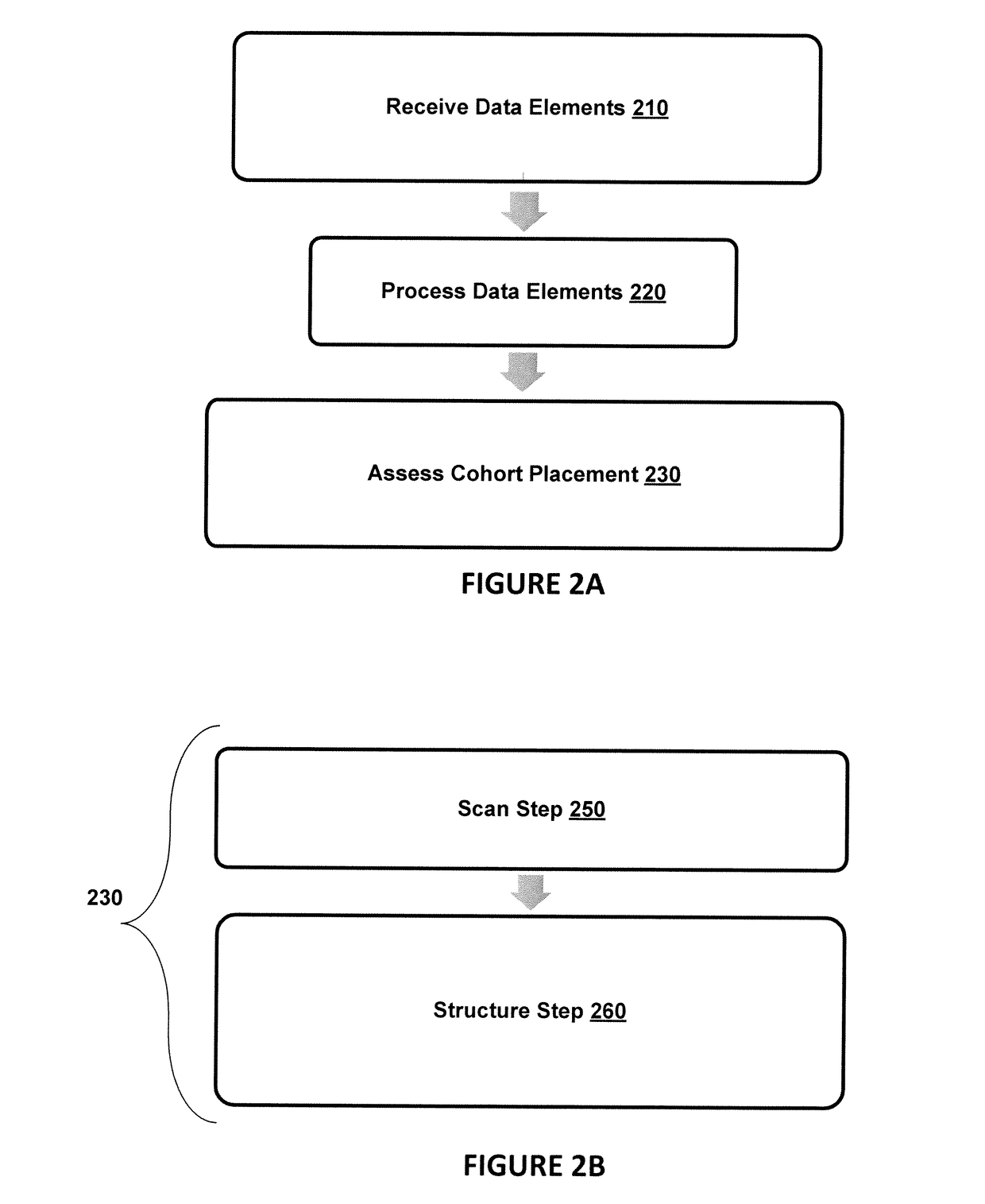Clinical information processing
a technology of clinical information and processing technology, applied in the field of clinical information processing, can solve the problems of ineffectiveness, slow, expensive and often ineffective conventional data extraction processes in healthcare, and achieve the effects of improving care quality, cost reduction, and cost effectiveness
- Summary
- Abstract
- Description
- Claims
- Application Information
AI Technical Summary
Benefits of technology
Problems solved by technology
Method used
Image
Examples
Embodiment Construction
[0052]The following description of some embodiments of the invention is not intended to limit the invention to these embodiments, but rather to enable any person skilled in the art to make and use this invention. Disclosed herein are systems and methods for processing data in order to assess the likelihood that a patient belongs within a specified cohort.
[0053]A foundational and revolutionary approach for the use processed unstructured data in healthcare is cohort identification. A cohort is a group of individuals that share a common characteristic or characteristics. By automatically identifying common patient characteristics through unstructured data in a robust and consistent way, cohorts may be easily and accurately identified. Cohorts underlie measurement of quality, analysis of research outcomes, determination of treatment algorithm, and countless other medical paradigms. A generalist approach to using processed unstructured data to identify cohorts supports generation of appl...
PUM
 Login to View More
Login to View More Abstract
Description
Claims
Application Information
 Login to View More
Login to View More - R&D
- Intellectual Property
- Life Sciences
- Materials
- Tech Scout
- Unparalleled Data Quality
- Higher Quality Content
- 60% Fewer Hallucinations
Browse by: Latest US Patents, China's latest patents, Technical Efficacy Thesaurus, Application Domain, Technology Topic, Popular Technical Reports.
© 2025 PatSnap. All rights reserved.Legal|Privacy policy|Modern Slavery Act Transparency Statement|Sitemap|About US| Contact US: help@patsnap.com



